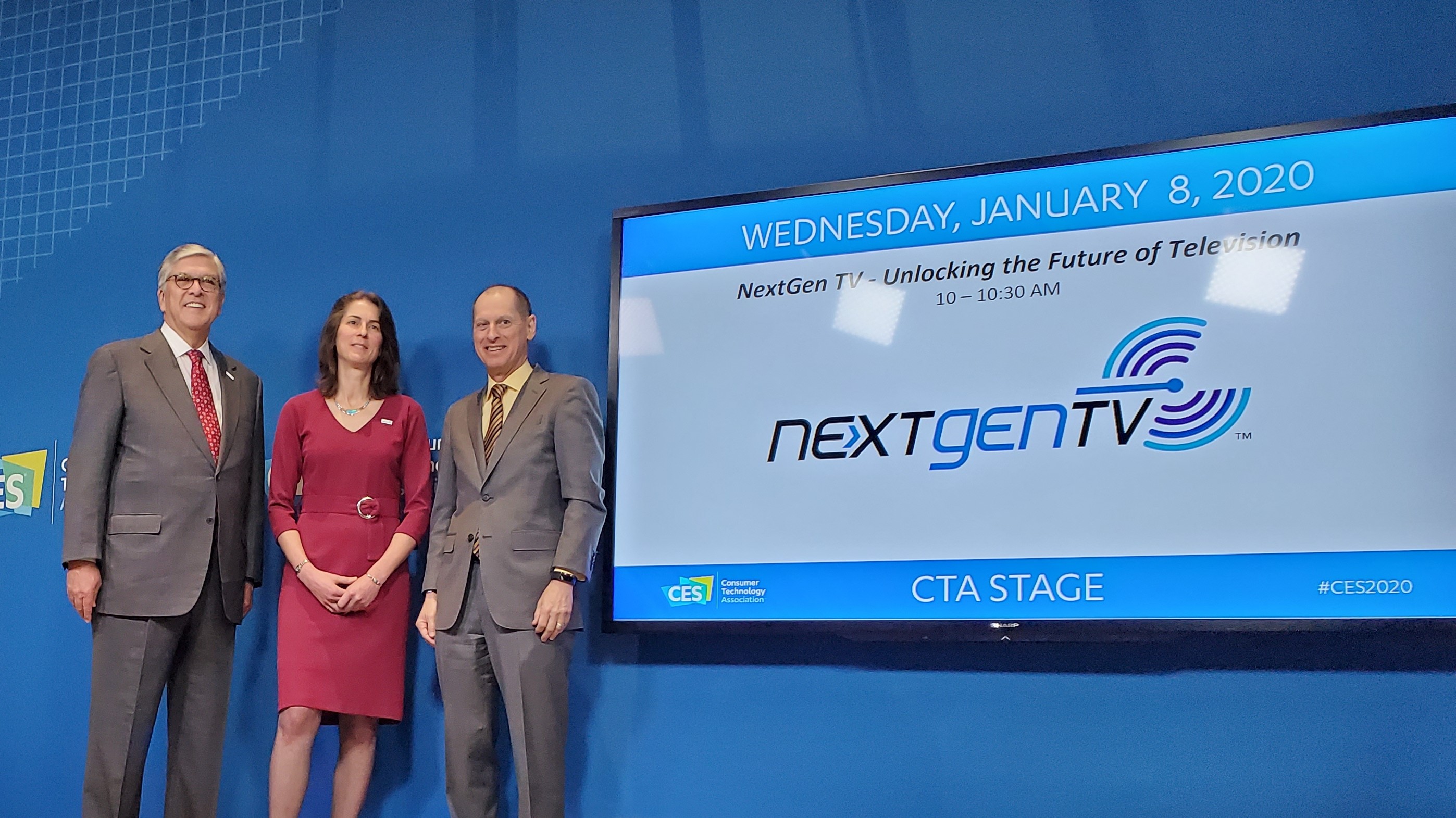Three of the Four TV Networks Support 3.0 ‘Without Reservation,’ Says Smith
LAS VEGAS—Three out of the four commercial TV broadcast networks are fully behind deployment of ATSC 3.0, and the fourth is not anti-NextGen TV but does not want to take a leadership role in the rollout, said Gordon Smith, president and CEO of NAB.

During an interview following a celebration of NextGen TV that brought together Madeleine Noland, ATSC president, Gary Shapiro, president and CEO of the Consumer Technology Association, and Smith on the main stage in the Grand Lobby of the Las Vegas Convention Center on Jan. 8 during CES 2020, the NAB chief responded to a question about the willingness of TV networks to advance ATSC 3.0 deployment.
“I think three without any reservation [support ATSC 3.0], and another one has told me: ‘We’re not against it; we just don’t want to be in the first wagon,” he said.
Smith did not identify which of the networks wishes to hold back; however, CBS has gone on record in the past about its desire to make its subscription over-the-top CBS All Access service a top priority.
“They are for it, and they, I think, will participate in all of the momentum that’s behind this,” he said.
In Smith’s view, supporting 3.0 for broadcasters is a matter of remaining competitive in the future. “The NFL and different sports networks, they are going to want this 4K.”
“They [broadcasters] are going to want to have the best and the brightest so broadcasting can continue to be the best way to grow their [sports leagues’] fan base,” he said.
Get the TV Tech Newsletter
The professional video industry's #1 source for news, trends and product and tech information. Sign up below.
Network support for the standard is an important ingredient to its rollout and ultimate success. Because broadcasters must continue to transmit ATSC 1.0 to viewers for the foreseeable future and because they have not been granted additional spectrum to simulcast both 1.0 and 3.0, a new level of cooperation involving the relationship between networks and their affiliates, as well as among competitors in local markets, will be needed to bring NextGen TV to local viewers.
Smith is optimistic about the prospects for cooperation. “I have no doubt about their [local stations’] willingness to cooperate with one another, and I know some are already working on it,” he said. “This is a harder lift than analog to digital, so it will take that cooperation to make that lift happen.”
Another key ingredient will be educating the public about NextGen TV and promoting its benefits. NAB has a line item in its budget for the 3.0 rollout, said Smith.
“We are very invested in making this happen,” he said. “Having all these qualitative improvements [made possible by 3.0] will be something that sells in the store and will be viewed with great favor by the American people,” he said.
For a comprehensive source of TV Technology’s ATSC 3.0 coverage, see ourATSC3 silo.
Phil Kurz is a contributing editor to TV Tech. He has written about TV and video technology for more than 30 years and served as editor of three leading industry magazines. He earned a Bachelor of Journalism and a Master’s Degree in Journalism from the University of Missouri-Columbia School of Journalism.

